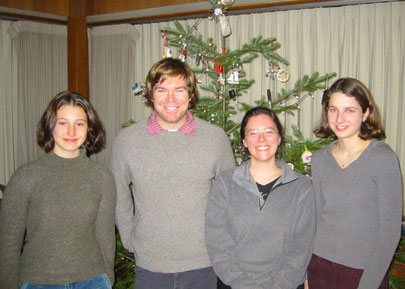Team Worm (left to right): Eliana Hechter, Chris Schoff, Adriana Dawes, S. Alex Hart

The central question in developmental biology is how a single cell with one genome produces numerous differentiated cells in the mature organism. One way an organism can achieve cellular diversity is through asymmetric division and protein localization. We used the model organism C. elegans to investigate the mechanisms by which a diversity of cell fates is generated. In C. elegans, cell fate specification begins at the one cell stage, as an initially unpolarized cell establishes an anterior/posterior axis by localizing specific proteins to opposite ends of the cell. This non-uniform protein distribution is maintained to first cleavage, when the single-celled embryo cleaves asymmetrically to yield daughters with different developmental fates. We used experiments and modeling to explore how feedback loops between regulatory proteins and the actomyosin mesh at the cell cortex establish cell polarity prior to the first cleavage.